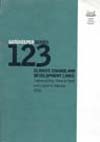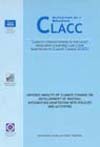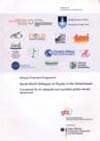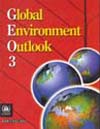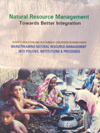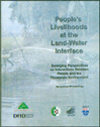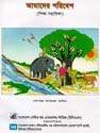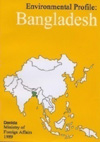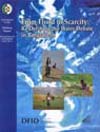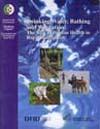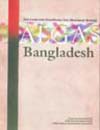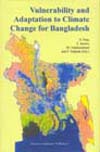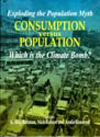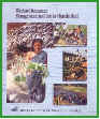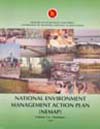Executive Summary
The Sundarbans, the largest mangrove forest in the world, and its rich biodiversity have been under increasing pressure due to human interventions. The forest is the habitat of Royal Bengal Tiger and many other animals and plants. The tiger population is believed to be in the decline due to illegal hunting and killing of the majestic animal. Against such backdrop, USAID is supporting Bangladesh through the Tiger Conservation Activists (Bagh) for protection of tiger and conservation of this mangrove forest ecosystem. The Bagh project aims at strengthening relationship between the Sundarbans and its surrounding communities. The society itself would be sustainably benefited through conservation of the forest and protection of its wildlives.
To assess the prevailing socio-economic and environmental situation of the communities in the Sundarbans impact zone, this baseline study has been carried out as a part of the Bagh project activity. The objectives of the baseline survey are to understand the current status of wildlife conservation and to assess socio-economic and environmental situations in the light of conservation.
Methodology
The survey methodology primarily consists of a survey of households in the impact zone comprising of four ranges of the Sundarbans. The survey has covered 412 households from 12 villages based on a two stage stratified sampling method. The households were stratified into five groups or strata which are: VTRT, Baghbandhu, Tiger Widow, Forest Resource Collectors and Other Community People. Statistical tables and measures have been obtained from survey data for detailed analysis.
Key Findings and Results
The survey has covered 412 household respondents of which 57% are males and the rest 43% are females. Of the households surveyed, 92% are male headed and the rest 8% are female headed. Most of the household heads (91%) were born in their respective village and 7% are born in other villages within the district and the rest 1.2% in other districts. With regard to religion of the respondents, 91% are Muslim and 9% are Hindus. Aside from household work, the important primary occupations are catching fish/crab in the rivers (12.2%), service (4.3%), small business/trade (3.9%) non farm labor (3.9%), own farming (3.3%) and farm labor (1.4%). In addition to primary occupation, 21% of the people also have a secondary occupation of which non-farm labor, own farming, farm labor and fishing are more common.
While near about 99% of the households have got homestead land, only 30% households have agricultural land. Besides, 30% households have land for fish culture and 20% households have land for shrimp culture. About 12% households under the survey are cultivating land taken from others on share-cropping basis.
About 98% of the households do have their own houses, 35% households have their boats, 20% households own cows/buffalos, only 13% households have TV set and 80% households have mobile phone.
In terms of wealth category, 66% of the households are found to be poor, 33% are middle class and one percent are rich.
The average annual household income is BDT 150763 and the average annual household expenditure is BDT 116203. Annual income of BaghBandhu is BDT 259800/- followed by VTRT BDT 258000, Forest Resource Collector BDT 147000 and Other Community People BDT 145645, Tiger Widow BDT 75492.
A high percentage of the households (43%) depend on pond/ditch/wetland and 40% on Pond Sand Filter for drinking water. Drinking water supplied by village level local pipeline system is used by 34%. Besides, households that depend on Deep Tube-Well & Shallow Tube-Well are 19% and 4% respectively.
Households having ring slab/offset (WWS) and ring slab/offset (WS) latrines are 39% and 34% respectively. Hanging/open latrine is used by 8% households while 4% households do not have any latrine. About 75% of the households surveyed have solar electricity and only 4.1% households are connected to grid electricity and while 19% do not have electricity.
About 70% households have member(s) suffering from disability or chronic illness. The incidences of chronic illness as reported by the households include gastric ulcer (37%), Arthritis Rheumatism (24%), Asthma or breathing problem (16%), hearts disease (9%), diabetic (7.5%), chronic dysentery (6%), skin disease (6%).
Most of the people (50%) depend on govt. health centre for medical treatment. Other treatment sources include: Private health facility (32%), pharmacy /dispensary (37%), private doctor (5%), certified health professional (18%), quacks (31%), Homeopathy (11%), Tertiary Hospital (2%).
Dependency on Sundarban
Around 60% households under the four ranges are involved in forest related activities. Forest Resource Collectors and the Other Community People are mostly dependent on the forest. A high percentage (28%) of these households are engaged in fish fry collection, 26% in catching frog/crab, 23% in wood cutting and 13% in fisheries. Honey collection and Golpata (Nipa palm) collection is done by 13% of the households. Most of these households depend on forest resources throughout the years.
About 40% households under the survey earn about 50-100% of their annual income from forest related resources.
The survey respondents have cited various reasons for their dependence on the Sundarbans. Landlessness and lack of alternative livelihood have been cited as reason by 36.2% and 35.7% of the respondents respectively. Besides, “need to supplement income” and “traditional practice” have been mentioned as the reasons by 18% and 17% respondents respectively.
The survey respondents have suggested for alternative livelihood opportunities in order to reduce dependence on the forest resources. The suggested livelihood activities include small business (59%), livestock rearing (38%), fish cultivation (22%), handicraft (27%), farming (35%), cottage and small industry (11%), transportation (6%).
Climatic Change
About 99% of the respondents have informed that their households or livelihood have been affected by adverse climate or weather events in the past. Regarding different climatic events, 94% were affected by cyclone, 14% by flood and 11% by excessive rainfall.
The main sources of early warning messages on natural calamities are neighbors (54%) followed by radio (48%), television (30%) and Disaster Management Committee (16%).
At least one member of most of the households (76%) moved elsewhere during the disaster event and members of 69% households moved away after the disaster event. According to a high percentage of the respondents (47%) there are increasing trend of salinity in their localities. However, there are significant variations in salinity of the four ranges. While in Satkhira the salinity level is found increasing by 81% of the respondents the corresponding figure in Sarankhola is only 18%.
About 59% of the households had to borrow as a coping strategy during the last disaster events.
Sundarbans and Wildlife Conservation
Almost all the respondents (99%) firmly agree that Sundarbans can be protected through tiger which act as a guard of the forest. Both men and women have similar views on the issue.
A relatively small section (32%) of the study population has the awareness about forest sanctuary. More men (42%) then women (17%) have the knowledge about forest sanctuary.
Most of the respondents (70%) consider hunting/poaching/trafficking as the threat for wildlife conservation.
Overall, 68% of the male respondents and an equal percentage of the female respondents expressed their support for complete restrictions on human access to the forest. The main reason for such restriction is to protect the forest and its resources.
Most of the male (69%) and the female (67%) are of the perception that the number of trees in the forest is on the decrease.
Tiger population is perceived to be decreasing by 81% of the male and 73% of the female under the survey.
Both men and women are of the opinion that creation alternatives livelihood opportunities for the forest dependent households would be an effective means for protection of the forest and wildlives. |

